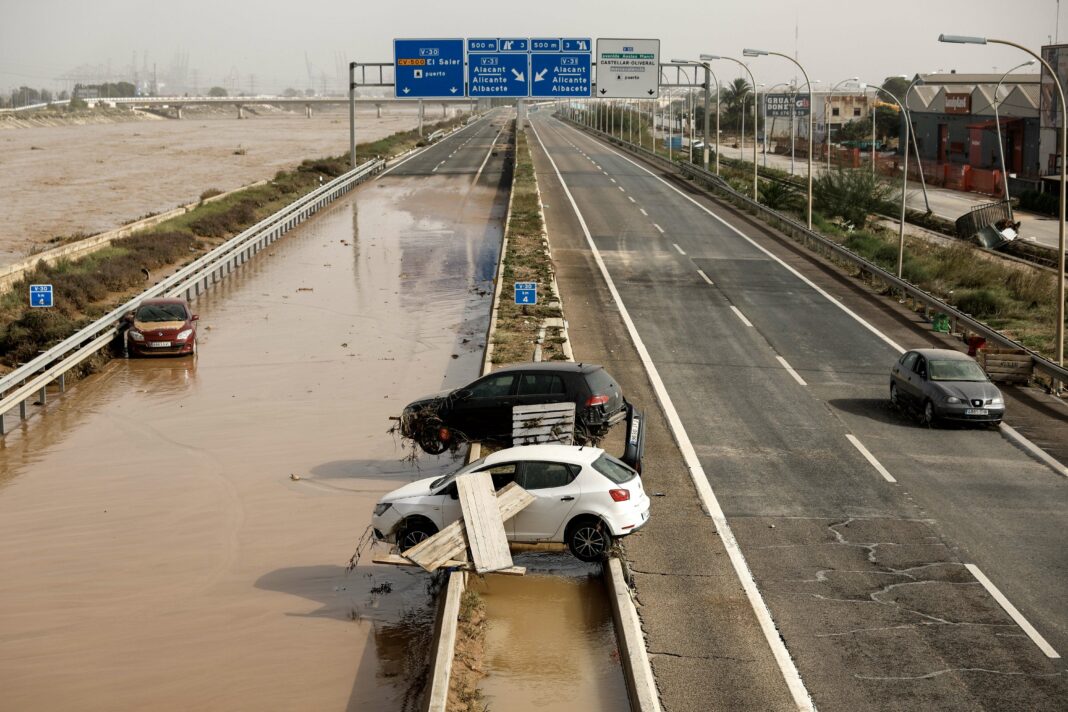Parts of the Mediterranean province of Valencia, Spain, experienced devastating flooding caused by intense thunderstorms, resulting in over 150 fatalities and numerous missing persons. The storms unleashed more than 200 millimeters of rain in just 24 hours, peaking at nearly 491 millimeters in the town of Chiva. This extreme weather, attributed to a cold air drop originating from Ireland, exacerbated the flooding due to the region’s mountainous terrain. Climate change is increasing the likelihood of such events in the fall.
On Wednesday, parts of the Mediterranean province of Valencia, including its eponymous capital, resembled a disaster zone. Following the severe flash floods, abandoned vehicles piled up in some streets. The death toll has exceeded 150, with dozens still unaccounted for.
The region was heavily impacted by the flooding, triggered by relentless thunderstorms that occurred on Tuesday.
Seeing cars floating through city streets isn’t uncommon this year — we’ve witnessed it in Italy and France. However, the events that unfolded in Spain on Tuesday and into Wednesday morning were on a different scale entirely. A specific weather phenomenon typical for autumn was at play.
The storm was immense, with over 200 millimeters of rain recorded in many areas of the eastern Spanish province in just 24 hours. In certain locations, the figures were even more staggering: in the municipality of Chiva, located west of the provincial capital, nearly 491 millimeters fell within a mere eight hours — that’s almost half the annual rainfall of cities like Zurich or Bern.
It’s the intensity of the rainfall over shorter periods that determines the severity of flash floods. Meteorologist Daniel Köbele from Meteo Schweiz noted that this intensity was exceptionally high.
On Tuesday evening, Chiva experienced hourly rainfall equivalent to a column of up to 122 millimeters. This amount was double the intensity seen during storms that struck southern Switzerland in late June and July.
The topography of the region exacerbated the flooding. Valencia is surrounded by mountain ranges that rise over 1,500 meters. As a result, the massive downpours rapidly cascaded into lower areas, inundating street after street and washing mud into the sea.
The storms were instigated by a weather phenomenon frequently observed in the Mediterranean region known as a “cold drop,” or “gota fria” in Spanish. This term refers to the cooler air temperatures present in the low-pressure system. “The air at higher altitudes is relatively cool,” stated Köbele.
The low-pressure system moved south from Ireland
The low-pressure system moved south from Ireland
This cold drop originated from the British Isles. A small low-pressure system made its way from Ireland at the end of the previous week. According to Köbele, it traveled slowly southward, crossing the Iberian Peninsula, nearly reaching Morocco before reversing course. Upon returning to Spain, the system finally triggered intense thunderstorms.
The contrast between the moist, warm air from the Mediterranean and the cooler air above facilitated these storms. The sluggish movement of the cold drop further contributed to the localized extremity of the rainfall.
Forecast models available to the Spanish meteorological service accurately predicted the potential intensity of the rains and provided timely spatial details. However, not all residents in the province received these warnings in time.
Similar storms occurred recently in France and Italy
Similar storms occurred recently in France and Italy
Hefty thunderstorms like those currently seen in Spain can also occur in autumn in regions such as Liguria and southern France, Köbele explained. Indeed, it was only a few weeks ago that southern France faced similar extreme weather, also instigated by a stationary low-pressure system.
Currently, water temperatures in the western Mediterranean are 1 to 2 degrees Celsius higher than the long-term average. The likelihood of such warmth persisting into the autumn has significantly increased due to climate change, consequently raising the chances of extreme rainfall during this weather pattern.
A similar weather scenario once flooded Valencia in 1957, though historical weather records indicate that the intensity of rainfall wasn’t as severe as it was this time.
